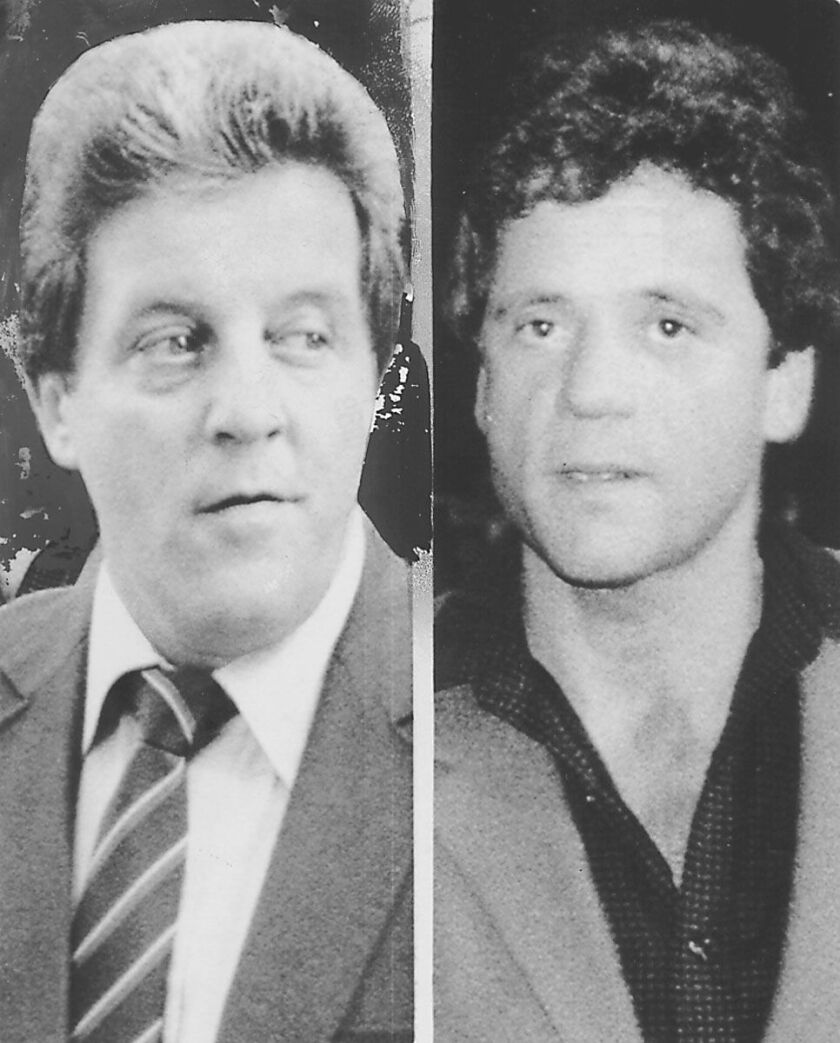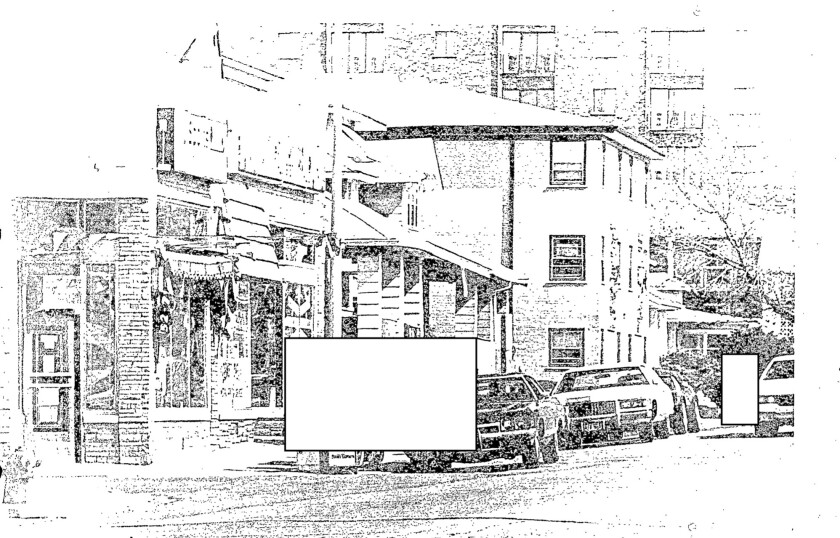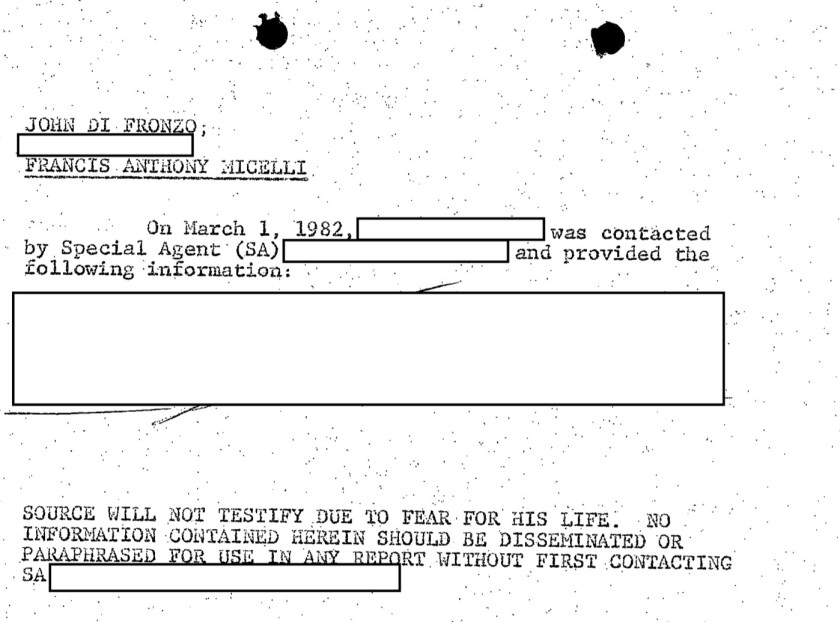During the 2007 “Operation Family Secrets” Chicago Outfit trial in Chicago, hit man-turned-prosecution witness Nicholas Calabrese testified that reputed mob boss John “No Nose” DiFronzo was among those involved in the 1986 murders of the Spilotro brothers.
But DiFronzo — who died in 2018 at 89 — was never charged in the killings and emerged otherwise unscathed from that massive federal prosecution that gutted much of the rest of the Chicago mob’s leadership.
There’s no hint as to why he wasn’t charged in 355 pages of investigative records that the FBI released in response to a Chicago Sun-Times public records request.
The once-secret FBI files cover mostly the 1970s and 1980s, when DiFronzo was rising in power but hadn’t yet reached the pinnacle of organized crime in Chicago.
Some of the paperwork — now part of the Sun-Times online “The FBI Files” database, which contains thousands of records on Chicago and Illinois politicians, gangsters, union bosses, religious figures, academics, spies and actors — is heavily redacted.
Many of the FBI’s files are subject to public release upon request after a person’s death, but the FBI decided to withhold some of its records on DiFronzo.
What it did release provides a window into a life of crime stretching from Al Capone’s time to the modern era.
But it includes little mention of Anthony Spilotro, the Chicago mob’s point person in Las Vegas, and his brother Michael Spilotro, who in 1986 were lured to a Bensenville-area home where they were pummeled, then driven to and buried in an Indiana cornfield — brutal killings fictionalized in the 1995 Martin Scorsese film “Casino.”
In 2007, Calabrese said in court that DiFronzo was among those in the home.
The newly released files make only passing reference to Anthony Spilotro, including this:
“Source information has recently indicated that DiFronzo is a frequent traveler to Las Vegas and at one point was considered as a replacement for Tony Spilotro to oversee mob activities in that city.”
Though undated, that mention appears to be from the early 1980s, before the Spilotros were killed.
As the Chicago mob has shrunk in power and presence, the FBI has shifted resources away from pursuing traditional organized crime.
In years past, though, the files offer a sense of how much effort federal agents put into watching DiFronzo and his associates, including surveillance on an Elmwood Park delicatessen where they would regularly meet.
One file, from 1982, showed cars parked near the deli, including one that was registered to D&P Construction Co., Inc. — a waste-hauling business that the FBI contended was secretly controlled by DiFronzo and his brother Peter DiFronzo, who died at 87 in 2020.
Federal agents had mob informants, some unwilling to go to testify and reveal they’d informed, the FBI records show.
“Source will not testify due to fear for his life,” the DiFronzo files often say.
The files also touch on DiFronzo’s penchant for cars — working for auto dealers and tooling around in showroom vehicles including a red convertible Cadillac and a “black vinyl over bronze Chevrolet.”
One record suggests that, at one point, a suburban police officer helped scuttle FBI efforts to trail DiFronzo in a car, blocking its path.
Among the agents who investigated DiFronzo, according to the records, was Peter Wacks, who tracked him for years and signed off on some of the FBI paperwork that was released.
After Wacks retired from the FBI, he drew the ire of some former colleagues by going to work for then-Rosemont Mayor Donald E. Stephens, who was running into trouble bringing a casino to his northwest suburb because of allegations of mob ties.
Wacks prepared what was described as an “independent” report effectively clearing Stephens of any meaningful organized crime connections to DiFronzo or anyone else.
State officials still refused to approve a casino going in Rosemont. Instead, the state license went to one in nearby Des Plaines.












